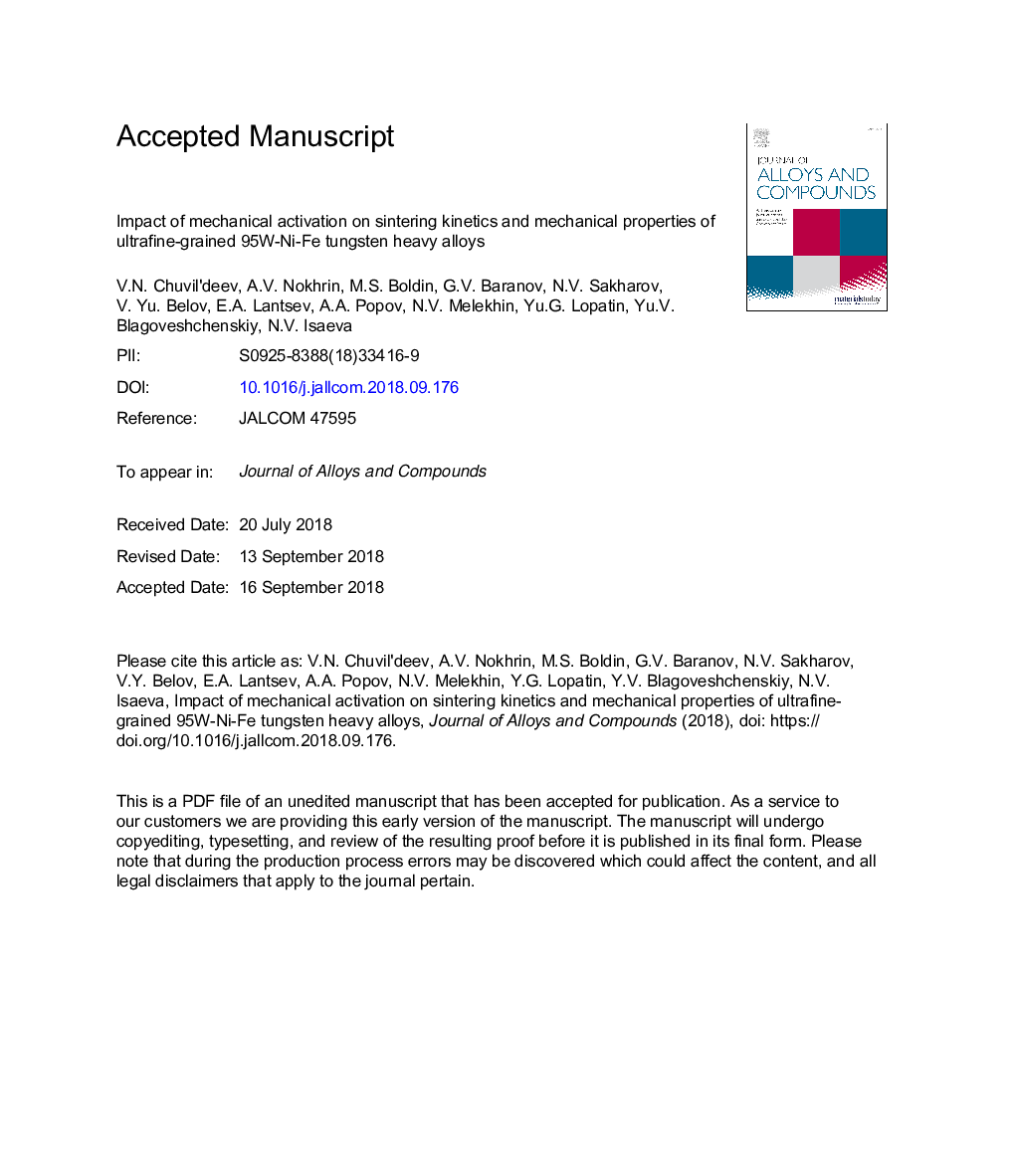| Article ID | Journal | Published Year | Pages | File Type |
|---|---|---|---|---|
| 11020028 | Journal of Alloys and Compounds | 2019 | 75 Pages |
Abstract
This paper is a study of sintering mechanisms, structure, and mechanical properties of ultrafine-grained 95W-Ni-Fe tungsten heavy alloys. Powder particle sizes were controlled by mechanical activation (MA) of original coarse-grained components and by addition of ultrafine particles. W-Ni-Fe alloys were obtained by sintering in hydrogen and Spark Plasma Sintering (SPS) in a vacuum. The dependence of ultrafine-grained (UFG) alloy density on sintering temperatures has been found to be non-monotonic with a maximum corresponding to the optimal sintering temperature. It has been demonstrated that the sintering activation energy of UFG alloys is significantly lower than that of coarse-grained alloys. It has been shown that the optimal SPS temperature for mechanically activated nanopowders goes down by 350-400â¯Â°C in comparison with the optimal sintering temperature in hydrogen for coarse-grained 95W-Ni-Fe powder composition. The reason for a lower optimal sintering temperature lies in a decreased activation energy of grain-boundary diffusion and formation of a non-equilibrium solid solution of nickel and iron in the surface layer of tungsten α-W particles during high-energy MA. High-energy MA and SPS were used to obtain samples of UFG tungsten alloys with high mechanical properties: macro-elastic limit - up to 2250â¯MPa, yield stress - up to 2500â¯MPa.
Keywords
Related Topics
Physical Sciences and Engineering
Materials Science
Metals and Alloys
Authors
V.N. Chuvil'deev, A.V. Nokhrin, M.S. Boldin, G.V. Baranov, N.V. Sakharov, V. Yu. Belov, E.A. Lantsev, A.A. Popov, N.V. Melekhin, Yu.G. Lopatin, Yu.V. Blagoveshchenskiy, N.V. Isaeva,
